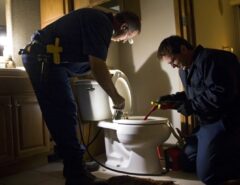The electrical system in your home is essential for keeping you and your family safe. If your current system cannot meet your power needs, consider upgrading it.
Older houses may have knob and tube or aluminum wiring, which can be a safety hazard. Some insurance companies will refuse to insure homes with older wiring.
Adding More Circuits
Adding more circuits is one of the most exciting upgrades to your home’s electrical system. In the real world, this usually means rewiring existing wiring or laying new copper to accommodate more outlets and lights. In addition, you may need to upgrade your panel or replace an old fuse box.
The best part is that you won’t have to pay for an arm and a leg. The process is relatively simple and won’t cost much more than a new kitchen table and chair set. It is also a fun and rewarding project for the whole family, especially kids.
Your electrical system can’t keep up with today’s technology, and you need to adjust to stay current and avoid costly service bills down the road. Hiring an electrician for more electrical services is the best way. They’ll help you choose the best option for your particular needs.
Rewiring
Rewiring your home’s electrical system can be costly, but it’s a great way to upgrade your property’s safety and functionality. The process involves stripping out old wiring, running new wires through the house, and installing a new circuit breaker panel to handle the new load.
Many older homes have dated wiring that cannot support modern appliances or electrical devices. This can cause problems such as tripped breakers, flickering lights, and frequent power failures.
Replacing outdated wiring with better, more efficient ones can reduce your home’s energy bills and keep it safe from fires. The wires in a newer home are better insulated so that they won’t overheat as quickly.
Another reason to rewire your home from services like residential electrical services is if you plan to add more rooms or make significant remodeling projects, such as adding a pool or extending your roof. Your new wiring must meet the latest building codes and ensure your safety.
Switches and Outlets
Switches and outlets are often overlooked but play a crucial role in your home’s electrical system. Besides making it easy to plug in appliances, they allow you to remotely control lights, fans, and other devices through your smart home app.
If worn out, old switches can pose a fire risk, so they must be replaced immediately. They can also cause problems with electricity if the metal clamps that grip hot and neutral wires start to wear out or bend too much.
The best-quality switches and outlets use a special back-wire connection that avoids bending a wire around a terminal screw. This makes it easier to wire and install, especially when wiring a new switch.
New Breakers
If your circuit breakers are tripping too frequently, you may need to upgrade them. This will protect your electrical system and appliances from overheating and fire hazards.
New breakers can be a simple and inexpensive way to upgrade your home’s electrical system. However, carefully choose the proper breakers for your needs and panel type.
Choosing the wrong brand can lead to problems with your new breaker or panel. This can be dangerous, void your breaker or panel warranty and result in a failed electrical inspection.
You’ll also want to consider the breaker panel’s rating, which reflects its ability to handle power. A 100-amp panel is suitable for tiny homes with minimal electrical needs, while a 200-amp board is more than sufficient to handle the electricity needed by modern households.





Leave a Reply